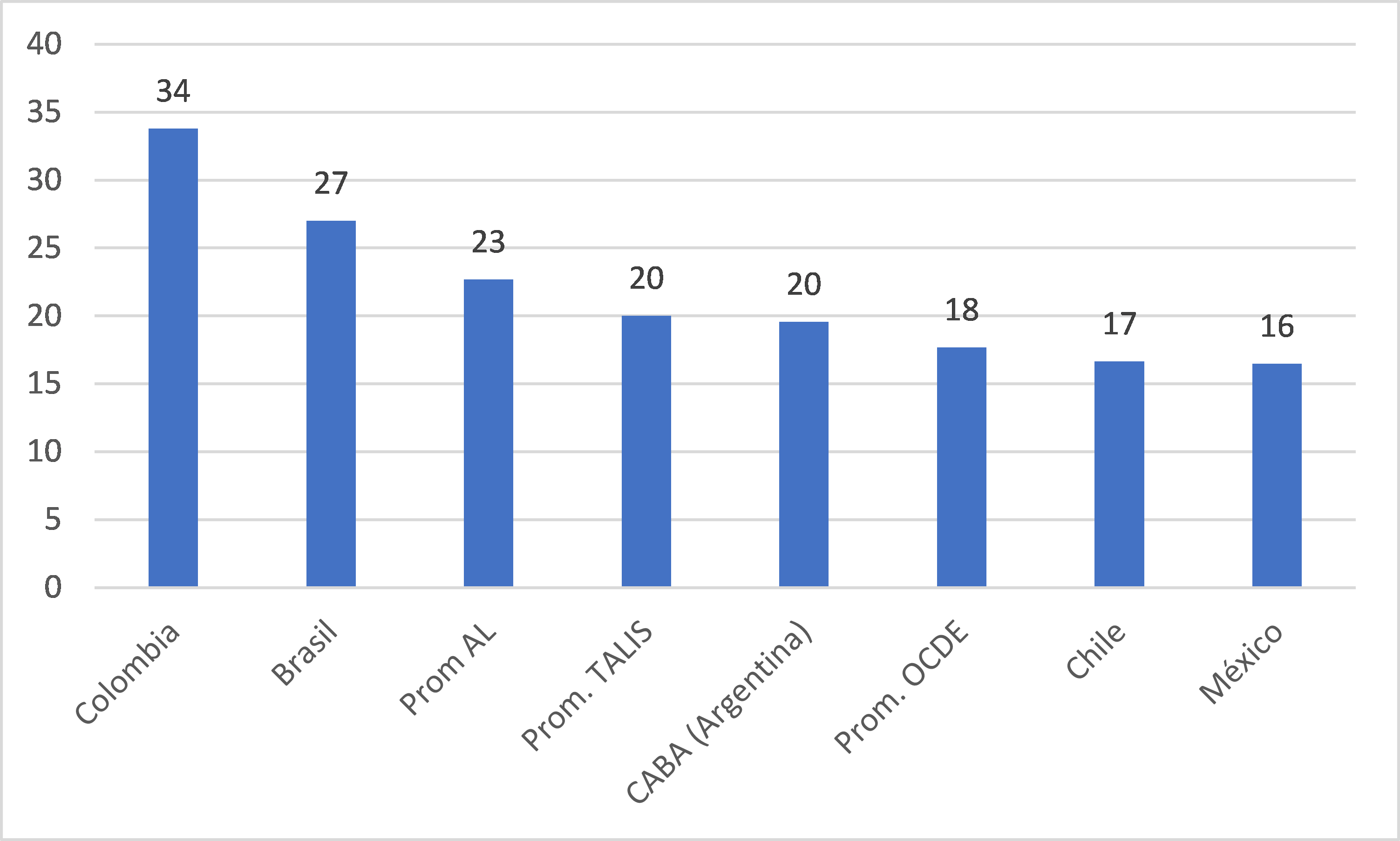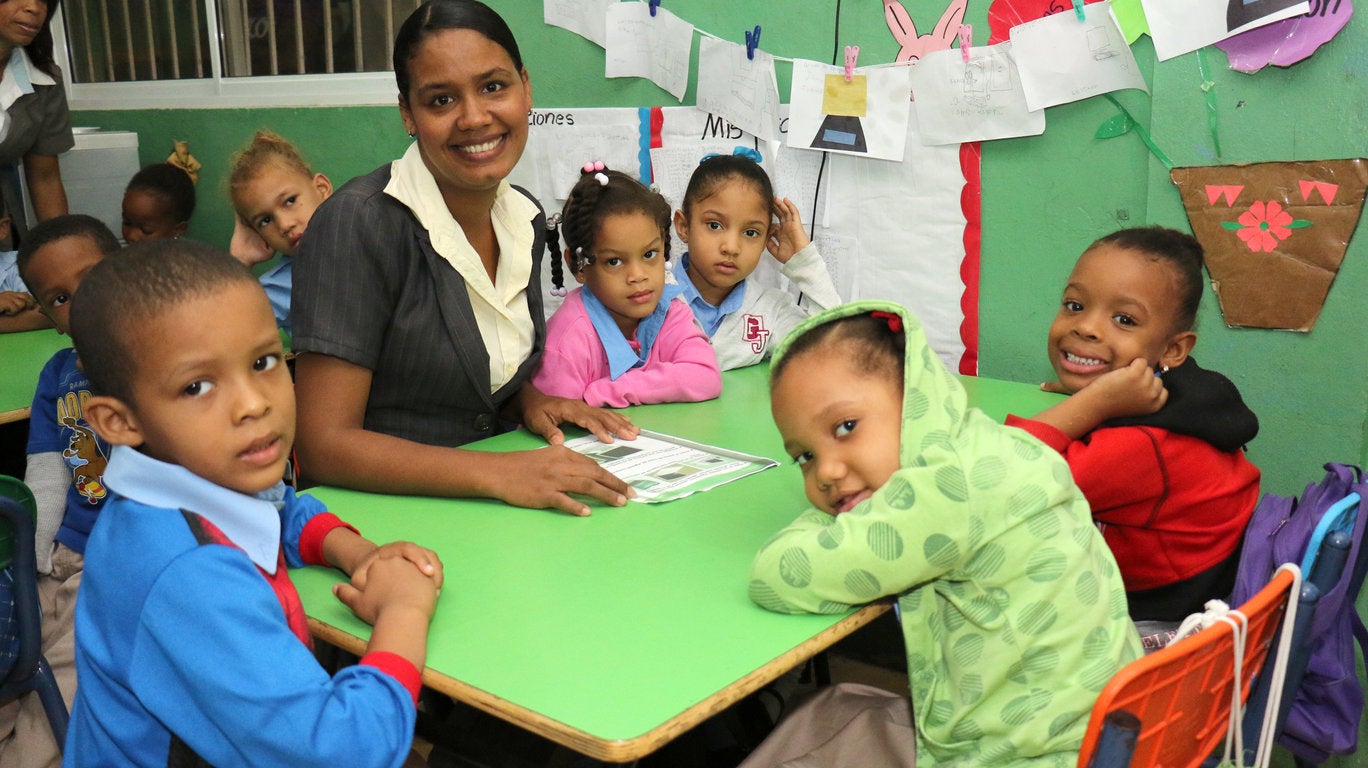Happy day, teachers! Today, Teacher’s Day is celebrated in several Latin American countries. And what better time to recognize their work than during this pandemic, when teachers’ work has been highlighted and valued by all of society.
The declaration of the COVID-19 pandemic last March has caused impacts in all areas. Education has undoubtedly been one of the most strongly affected sectors, since for the first time, 165 million children and youth in Latin America and the Caribbean have been affected by the total or partial closures of their schools. This has generated an unprecedented situation, in which education systems and schools have quickly had to adjust their teaching processes so that the greatest possible number of children can continue learning from home.
The challenge for teachers has been enormous: an estimated 60.2 million have been affected by school closings globally. They had to start preparing classes and materials quickly to facilitate the continuity of the learning process from home as much as possible.
At the same time, the support that teachers offer in the classroom on a daily basis was largely replaced by the support and guidance that parents or caregivers can offer their children. Parents and caregivers do not have enough preparation to support their children in the same way that teachers do. Many are also working from home, which makes it difficult to give the attention their children require to continue learning.
It is possible that this situation generates losses in learning for all students thus increasing the gaps that already existed before the pandemic (Busso et al., 2017): children from more vulnerable households have less access to their teachers and quality education resources, partly due to the lack of connectivity or access to devices to communicate with them, and also because they have parents with less education or preparation to support their learning process. For example, in Mexico, Colombia, Peru and Panama, only 1 in 2 students in rural areas has internet access at home, and in the region, less than 30% of vulnerable households in Latin America have access to a computer at home for homework.
What have Latin American teachers done?
With the tools at their disposal, and little preparation, many teachers have had to reinvent their teaching processes overnight to allow the continuity of learning from home during the emergency and face three great challenges.
First, most teachers were not prepared for the full digitization of their classes, yet they had to learn within a few days how to use digital tools to record and stream their classes as well as communicating with their students. The challenge was not minor, since traditionally many have not been accustomed to the use of digital resources and have received little training. According to PISA 2018 data, only 58% of secondary teachers in the region have the technical and pedagogical skills necessary to integrate digital devices in instruction, and teachers in the most vulnerable schools don’t have the skills to take advantage of these resources. Likewise, in 2018, almost 25% of teachers in the region who participated in the TALIS survey recognized a great need to train in information and communication technologies for teaching (see graph).
Percentage of teachers who declare a high need for training in information and communication technologies for teaching, TALIS 2018

Source: OECD, TALIS 2018.
Notes: In TALIS the training needs are categorized into 4 levels: no need, low, moderate and high. The graph shows the percentage of teachers with a high level of need.
Second, the low connectivity and access to devices such as computers or tablets, has limited access to digital resources, so most teachers have also had to prepare new materials or adjust existing resources and content so that they can be distributed through radio, television, or even print, so that they can reach the most vulnerable students or students in more remote areas.
A third challenge for teachers has been how to maintain psychosocial and socio-emotional support for their students. For children, one of the most serious consequences of the closure of schools has to do with the inability to access their peers and teachers, and a safe environment, with warm and positive interactions that allow them to properly develop. Achieving this type of interaction through digital media is difficult, and even more so without direct contact and closeness with teachers and other children. However, many teachers have found different ways to talk and keep in touch with their students, and at the same time, to support parents and caregivers through emails, text messages or WhatsApp, so that they can develop a healthy and stimulating socio-emotional environment for children while they are at home.
All problems can represent opportunities and it is possible that this pandemic is an opportunity to rethink the teaching profession and the role of teachers in the learning process. Today we see how, having to take on some teaching tasks at home, parents have realized the importance of teachers for learning and the cognitive and socio-emotional development of their children.
It is possible that the requirements of social distancing will generate important changes in schools and teaching methods. On the one hand, we will probably see a multiplication of blended learning methods, in which children and young people will spend less time in the classroom with their teachers, and more time connected to digital devices or virtual classrooms. For teachers, this will mean rethinking the way they teach, and will require prioritization and reorganization of content and greater preparation. In addition, blended learning will be developed through various media or platforms, and teachers will not only have to “record” some of their classes, but also develop or adapt content for TV, radio, and print media. On the other hand, parents will undoubtedly have to be more involved in the educational processes of their children. This is positive for learning, but it will also require greater coordination between teachers and parents that does not exist today in most communities in Latin America and the Caribbean.
To avoid irreparable losses in the learning of students in the region and a significant increase in the gaps between children from different socioeconomic backgrounds, it is crucial that the value of the teaching profession continues and increases when schools reopen. We cannot leave our teachers on their own. They will be crucial to maintain the learning of children and youth in the region and to mitigate the negative impacts of school closures on students, particularly the most vulnerable ones. In this new environment, teachers must use new tools and adapt content so that their students can learn through multiple media and formats, and therefore we must give them all the support and training they need to promote healthy and safe learning environments for their students.
Have you thanked your favorite teacher yet? How can your government continue to support our teachers? Tell us in @BIDeducacion with the hashtag #diadelmaestro #graciasmaestros


Quisiera contactar a la autora. Estamos haciendo un reportaje en Connectas.
Como profesora digo que este contexto de pandemia me ha permitido reflexionar sobre lo fundamental que son las tecnologías educativas para cerrar las brechas en educación.
Los padres se dieron cuenta de lo importante que es el maestro ya que no solo nos preocupamos en aprendizaje cognitivo sino en su formación socioemocional de sus hijos.